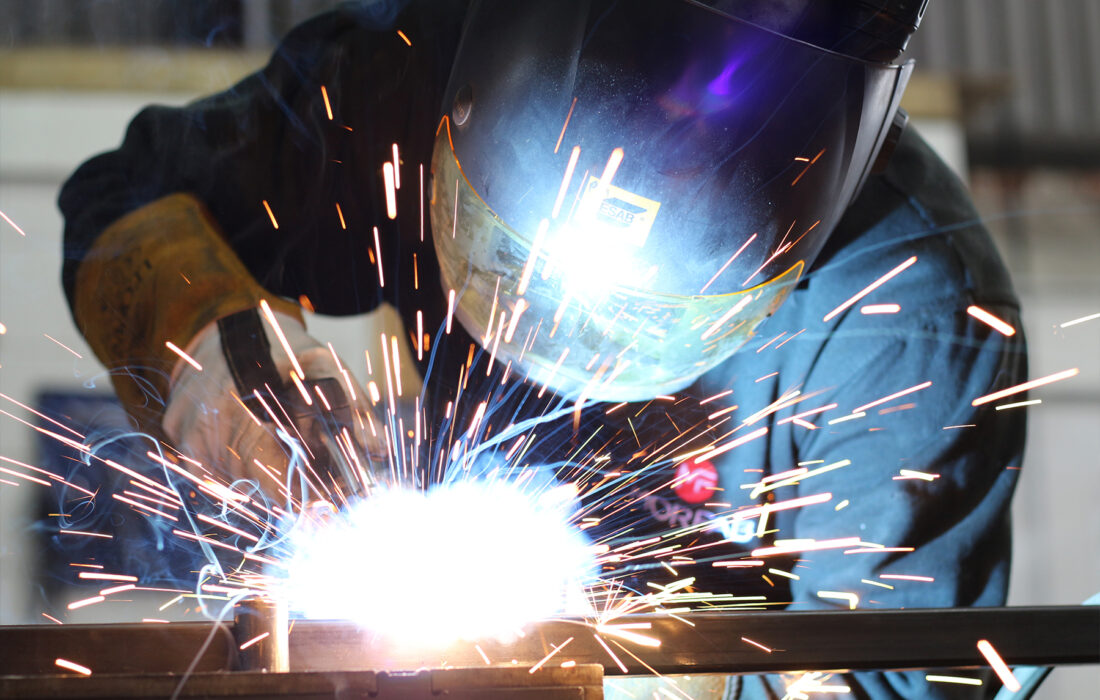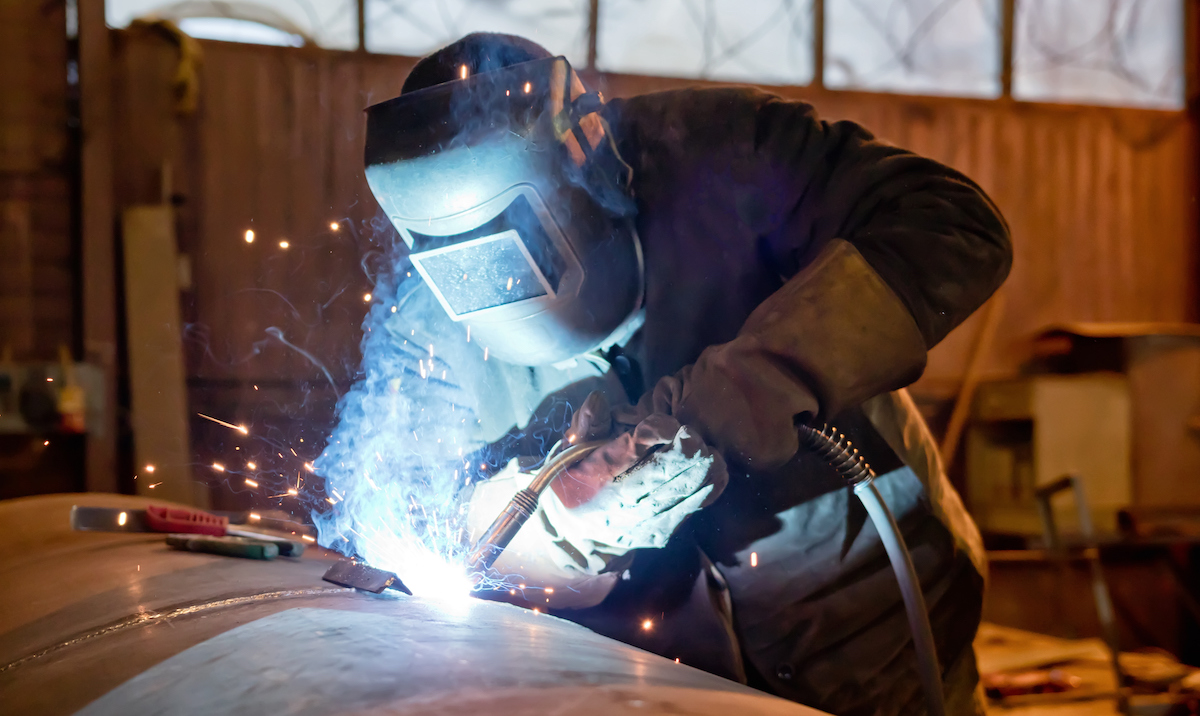Usual Welding Repair Issues and Just How to Address Them Properly
Welding repair services usually experience a variety of issues that can endanger the stability of the final product. Usual troubles consist of insufficient penetration, porosity, and misalignment, to name a few. Each flaw offers distinct challenges that need certain strategies for resolution. Comprehending these problems is necessary for welders aiming to improve their results and skills. This conversation will certainly discover these typical welding repair service issues and reliable techniques to address them.
Insufficient Penetration
Inadequate infiltration occurs when the weld metal stops working to totally fuse with the base product, causing weak joints and prospective architectural failings. This problem often stems from insufficient warm input, incorrect electrode angle, or improper welding rate. Welders may run into poor penetration as a result of a miscalculation of the required criteria for a certain product thickness or type. Furthermore, contamination on the base material's surface can hinder effective bonding, aggravating the trouble. To resolve poor infiltration, welders need to guarantee proper settings on their tools and keep a clean work surface area. Regular evaluation of welds is recommended to identify any type of deficiencies early, allowing for timely modifications and the prevention of jeopardized structural honesty in bonded settings up.
Porosity
Porosity is an usual problem in welded joints that shows up as little gas bubbles trapped within the weld metal. This problem can jeopardize the integrity of the weld, bring about decreased toughness and possible failing under stress and anxiety. Montana Mobile Welding and Repair Belgrade Welding. Porosity commonly emerges from contamination, moisture, or inappropriate welding strategies, which enable gases to get away right into the molten weld swimming pool. To resolve porosity, welders ought to ensure correct surface prep work, keep a clean workplace, and make use of ideal welding specifications. In addition, choosing the best filler product and securing gas can alleviate gas entrapment. Regular examination and testing of welds can help recognize porosity early, ensuring timely restorative actions are taken, thus preserving the top quality and reliability of the bonded framework
Imbalance
Misalignment in welding can occur from different factors, including inappropriate arrangement and thermal development. Recognizing the origin is necessary for efficient resolution. A number of modification techniques are readily available to straighten components and guarantee structural integrity.
Sources of Misalignment
Welding misalignment commonly originates from a variety of underlying problems that can endanger structural integrity. One main reason is improper fit-up of components prior to welding, which can cause spaces and unequal surfaces. Variations in thermal development throughout the welding process can additionally lead to distortion, specifically if the products being joined have different coefficients of development. Additionally, insufficient fixturing and clamping may fail to hold elements firmly in location, leading to activity throughout welding. Improperly kept tools, including welding devices and devices, may present inconsistencies in the weld bead, additional contributing to misalignment. Finally, operator mistake, originating from not enough training or experience, can likewise play a substantial role in producing misaligned welds.
Modification Techniques Offered
Dealing with misalignment effectively calls for a combination of restorative methods customized to the certain issues at hand. One typical method is making use of components or jigs to hold components in the appropriate position throughout welding, ensuring consistent positioning. Furthermore, pre-heating the materials can help in reducing distortion and boost fit-up. For substantial misalignment, mechanical adjustment methods, such as making use of hydraulic jacks or clamps, can be used to correct the position prior to welding. Post-weld warm therapy might additionally be needed to soothe anxieties brought on by misalignment. Careful evaluation and change throughout the setup phase can stop imbalance problems from coming to be significant problems, advertising a smoother welding procedure and enhancing total structural stability.
Distortion
Distortion is a typical obstacle in welding that can develop from numerous aspects, including uneven heating and air conditioning. Recognizing the sources of distortion is necessary for carrying out effective avoidance techniques. Resolving this issue not just enhances architectural stability yet additionally boosts the general high quality of the weld.
Root causes of Distortion
When based on the extreme warmth of welding, products frequently undergo adjustments that can cause distortion. This sensation primarily occurs from thermal expansion and contraction during the welding process. As the weld area warms up, the material broadens; upon cooling, it acquires, which can create inner anxieties. On top of that, uneven heating across a work surface can aggravate these stresses, leading to warping or bending. The kind of material also plays a significant role; steels with differing thermal conductivity and coefficients of expansion might respond in a different way, resulting in unforeseeable distortions. Inadequate joint style and insufficient fixturing can contribute to imbalance throughout welding, raising the chance of distortion. Recognizing these causes is important for reliable welding repair and avoidance methods.
Prevention Techniques
Reliable avoidance techniques for distortion throughout welding concentrate on controlling warmth input and making certain proper joint layout. Preserving a constant warmth input assists to minimize thermal development and tightening, which can bring about distortion. Making use of techniques such as preheating the work surface can also lower the temperature slope, promoting consistent heating. Additionally, choosing suitable joint styles, such as T-joints or lap joints, can enhance security and lower anxiety focus. Applying correct fixturing to secure the work surfaces in area even more aids in preserving alignment during the welding process. Staggered welding series can disperse heat extra evenly, avoiding local distortion. By using these strategies, welders can considerably reduce the probability of distortion and enhance the overall top quality of their welds.
Cracking
Breaking is a typical issue come across in welding repair services, often arising from numerous elements such as inappropriate cooling prices, product option, or insufficient joint prep work. The incident of splits can substantially compromise the stability of the weld, causing possible failures during procedure. To resolve this issue, welders must initially analyze the source, making certain that materials work and suitably chosen for the particular application. Additionally, managing the air conditioning price during the welding process is crucial; rapid cooling can cause stress and anxiety and cause splitting. Correct joint layout and preparation additionally add to lessening the danger. Carrying out these methods can boost weld high quality and durability, ultimately decreasing the probability of splitting in ended up weldments.

Incomplete Fusion
A significant concern in welding repairs is incomplete blend, which occurs when the weld steel does not sufficiently bond with the base material or previous weld passes - Montana Mobile Welding and Repair Belgrade Fabrication. This defect can result in weak points in the joint, potentially endangering the stability of the welded framework. Factors contributing to incomplete combination include not enough warmth input, incorrect welding technique, and contamination of the surfaces being joined. To address this problem effectively, welders must guarantee proper pre-weld cleaning and surface preparation, as well as change their welding parameters to accomplish adequate infiltration and combination. Routine evaluation during the welding procedure can likewise assist recognize incomplete combination early, allowing for prompt restorative steps to enhance the general top quality of the weld
Overheating
While welding repair discover here work can improve structural integrity, overheating offers a significant challenge that can result in product destruction. Extreme heat throughout welding can alter the mechanical properties of steels, resulting in reduced strength, enhanced brittleness, and bending. This phenomenon is specifically vital in high-stress applications where structural reliability is critical. Recognizing overheating can involve visual inspections for discoloration or distortion, along with keeping an eye on temperature during the welding process. To mitigate the dangers associated with overheating, welders need to use ideal methods, such as controlling warmth input, adjusting travel speed, and using appropriate filler materials. Furthermore, implementing pre- and post-weld warm treatments can aid bring back material residential properties and enhance the total quality of the repair, guaranteeing long-lasting efficiency and safety and security.
Frequently Asked Inquiries
What Are the Usual Indicators of a Welding Issue?

Just How Can I Test My Welds for Quality?
To examine welds for top quality, one can make use of aesthetic evaluations, ultrasonic testing, and radiographic methods. Each technique ensures architectural stability, recognizes defects, and validates adherence to specified requirements, eventually boosting the dependability of the welded joints.
What Safety and security Precautions Should I Take While Welding?
When welding, one need to prioritize safety and security by using ideal personal safety equipment, ensuring proper air flow, protecting flammable materials away, preserving a tidy work area, and being aware of environments to protect against injuries and accidents.
Can I Repair a Weld Without Remodeling the Entire Joint?
Repairing a weld without redesigning the whole joint is possible, relying on the damages (Belgrade). Strategies such as grinding, including filler product, or making use of a welding procedure can effectively attend to particular imperfections while maintaining the surrounding framework
What Equipment Are Essential for Effective Welding Services?
Necessary devices for effective welding fixings include a welding equipment, cable brush, grinder, safety gear, clamps, and filler materials. Each tool plays a vital duty in making certain high quality and safety throughout the repair work procedure. Porosity generally occurs from contamination, dampness, or improper welding techniques, which permit gases to leave into the molten weld swimming pool. Improperly conserved devices, including welding devices and devices, might introduce incongruities in the weld grain, further contributing to misalignment. When subjected to a knockout post the intense warmth of welding, products commonly go through changes that can lead to distortion. Cracking is a common problem encountered in welding repairs, typically resulting from numerous factors such as improper cooling rates, product selection, or poor joint prep work. A significant concern in welding repairs look at more info is incomplete combination, which happens when the weld steel does not effectively bond with the base product or previous weld passes.